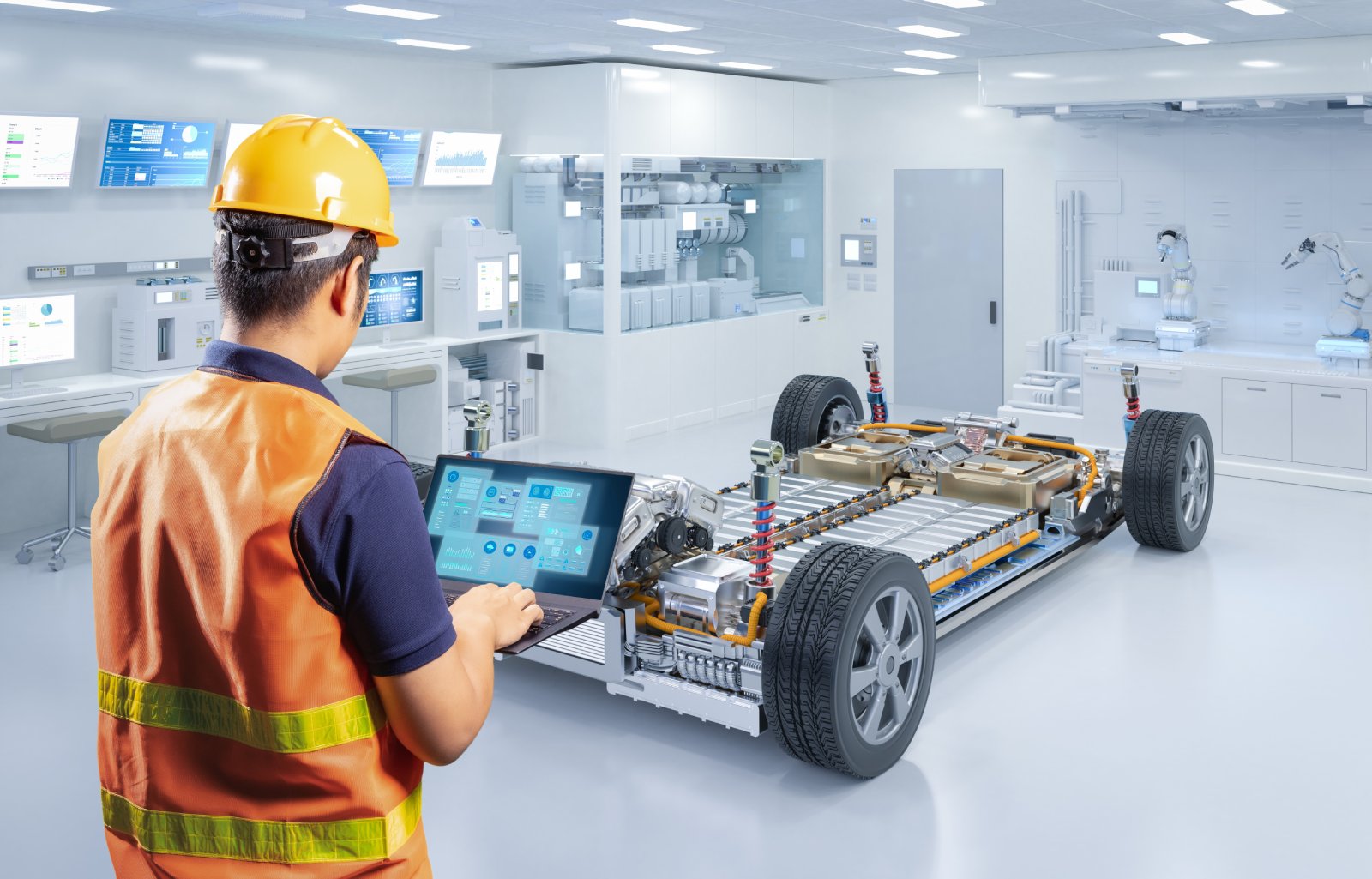Climate change forces us to make “greener” choices, including transportation. But while electric vehicles help minimize greenhouse gases, their production process might be less eco-friendly.
EVs for Everyone?

Image Credit: Shutterstock / Owlie Productions
More and more governments and developed countries are pushing for better-functioning electric vehicles (EVs) to help combat pollution and the reliance on the oil industry.
But before we examine whether EVs are the best thing since low-GI bread, let’s start at the basics: how do they work?
One More Thing to Charge

Image Credit: Shutterstock / Owlie Productions
Contrary to petrol- and diesel-fueled cars, EVs are powered by rechargeable batteries using a cable, like smartphones. The energy stored inside the batteries is transformed into power, driving the vehicle.
Powered Up

Image Credit: Shutterstock / Somchai_Stock
Kinetic energy, caused by movement, is converted into electricity – a process called ‘regenerative braking’. This is fed back into the batteries, recharging them as you lift off the accelerator.
Optimistic vs. Realistic

Image Credit: Shutterstock / Monkey Business Images
Only three years ago, the Biden administration proposed that, by 2030, EVs would make up 50% of all new cars sold.
Early in 2023, the Environmental Protection Agency (EPA) set a stricter limit on new car emissions, which The New York Times declared as follows: “That limit would be so strict that it would force carmakers to ensure that two-thirds of the vehicles they sold were all-electric by 2032.”
It’s a Trend

Image Credit: Shutterstock / Gorodenkoff
Starting in 2035, California wants to ban the sale of new internal combustion engine cars – and at least eight other states want to do the same.
Various carmakers, such as Honda, Chrysler, and Chevrolet, also plan to switch to EVS within the next decade.
Really That Green?

Image Credit: Pexels / Yan Krukau
But is the production of EVs environmentally friendly?
According to the MIT Climate Portal: “Building the 80 kWh lithium-ion battery found in a Tesla Model 3 creates between 2.5 and 16 metric tons of CO2 (exactly how much depends greatly on what energy source is used to do the heating). This intensive battery manufacturing means that building a new EV can produce around 80% more emissions than building a comparable gas-powered car.”
Not Fossil-Fuel Free

Image Credit: Shutterstock / Jirapong Manustrong
And what about power grid capacity and energy sources?
US power plants burn various energy sources, including fossil fuels which produce more than 60% of US electricity generation. So, your EV basically still runs on oil and coal.
Let’s Talk About Batteries

Image Credit: Shutterstock / Phonlamai Photo
Also, EV batteries use rare minerals, for which the mining process is both very polluting and, regarding human rights, sketchy.
And recycling EV batteries can also contribute to toxic pollution, with some skeptical if these can really be recycled cost-effectively.
Concerning Copper

Image Credit: Shutterstock / SFIO CRACHO
Cornell Professor Lawrence M. Cathles and University of Michigan Earth & Environmental Sciences Professor Adam Simon published a study “Copper mining and vehicle electrification”, which states that copper can’t be mined fast enough to produce wires and other components required to meet the current goals of renewable energy.
What About Wires?

Image Credit: Shutterstock / Pavle Bugarski
Simon also states that much more copper is required for the EV wiring, plus all the new wires to move the power from the grid to juice up the cars.
“A normal Honda Accord needs about 40 pounds of copper. The same battery electric Honda Accord needs almost 200 pounds of copper,” said Simon.
He added, “…the amount of copper needed is essentially impossible for mining companies to produce.”
Enough Power?

Image Credit: Shutterstock / BongkarnGraphic
Regarding EV battery production, large amounts of electricity are needed not only to heat ovens for baking electrode materials, but also to charge and discharge the battery when preparing it for use.
Carbon-Heavy Cars

Image Credit: Shutterstock / Rexjaymes
Yes, electricity can be produced with zero emissions, but most countries still burn carbon-heavy fossil fuels for generators.
According to the Argonne National Laboratory in Illinois, cited by the US Environmental Protection Agency, manufacturing battery cars results in approximately 60% more carbon emissions compared to fossil fuel ones.
Will We Make It?

Image Credit: Shutterstock / antoniodiaz
But EVs also present other disadvantages. Take, for instance, “range anxiety” – the worry that your EV will run out of power before reaching your destination.
Petrol-powered cars can, on average, travel between 400 and 500 miles on one tank of fuel. Diesel-powered cars can go even further.
Not Too Far

Image Credit: Shutterstock / Andrey_Popov
Compare those distances with the average EV that can travel about 300 miles on one charge. Thus, it becomes more difficult to travel larger distances on a daily or weekly basis.
Charging Infrastructure

Image Credit: Shutterstock / Owlie Productions
Many potential EV owners are also concerned about where, and how often, they need to charge their cars. It can be more costly to charge in public than at home. It can also be difficult to locate an available charging station when you’re on the road.
And yes, as EV production and -usage increases, more charging stations are bound to pop up, but at the moment, they are quite limited.
Too Much Time

Image Credit: Shutterstock / Slava Dumchev
Where you can fill your fuel tank in mere minutes, it can take you a lot longer to power up your EV – which can become an issue when traveling long distances.
Public charging stations can charge the battery faster, yet they’re more expensive. Home-based chargers cost less, but take more time.
Bad Weather

Image Credit: Shutterstock / noriox
Additionally, charging your EV in very hot or very cold weather can up the charging time from 30 minutes to over an hour. Extreme temperatures can also lead to a 40% decrease in range.
The Costs

Image Credit: Shutterstock / Korawat photo shoot
EVs also cost a lot more than ordinary cars, meaning higher upfront expenses.
And they also tend to depreciate quicker, as your EV’s value can decrease by up to 50% only during the first three years.
Does the US Have Enough Juice?

Image Credit: Shutterstock / goodluz
However, the main issue is that the American power grid is incapable of handling the demand imposed by the new EV mandates.
According to Andrew Boyle, head of a large commercial trucking company, who testified before Congress last April: “After one trucking company tried to electrify just 30 trucks at a terminal in Joliet, Illinois, local officials shut those plans down, saying they would draw more electricity than is needed to power the entire city. A California company tried to electrify 12 forklifts. Not trucks, but forklifts. Local power utilities told them that’s not possible.”
More Work to Do

Image Credit: Shutterstock / BlueSkyImage
Nobody is claiming that electric vehicles have zero benefits – they do help by decreasing CO2 emissions, after all.
But in the end, the ability of EVs to properly combat climate change (and not put more strain on the user or the economy) is dependent on various factors – and copper is just one of them.
Oil Dumping Scandal Rocks Ships Heading to New Orleans

Image Credit: Shutterstock / Aerial-motion
Two shipping companies have been fined after knowingly hiding a large oil spill in the Atlantic Ocean. Oil Dumping Scandal Rocks Ships Heading to New Orleans
20 Eye-Opening Realities Facing Retiring Baby Boomers

Image Credit: Shutterstock / Jack Frog
As Baby Boomers approach retirement, the promise of leisure and security often seems unattainable. This generation faces unique challenges that could redefine retirement. Here’s a stark look at the realities shaping their outlook. 20 Eye-Opening Realities Facing Retiring Baby Boomers
Retail Apocalypse: Massive Closures Sweep Across U.S. Brands

Image Credit: Shutterstock / Tada Images
Stores across the U.S. are closing at unprecedented levels, according to new research from advisory firm Coresight Research. Read on for more information about the impact this could have on you and your communities. Retail Apocalypse: Massive Closures Sweep Across U.S. Brands
Featured Image Credit: Shutterstock / Viktoriia Hnatiuk.


